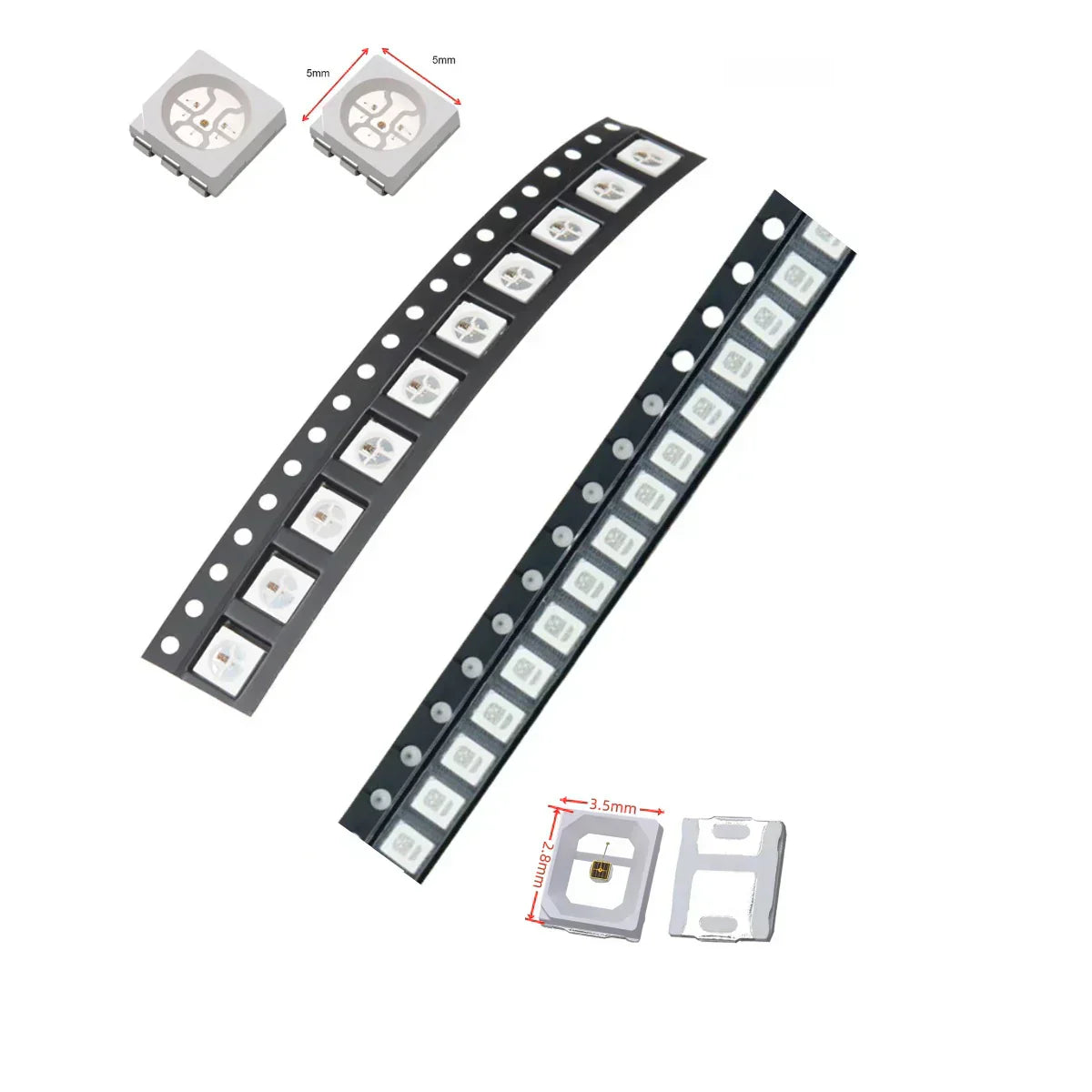When selecting infrared (IR) or red LED chips, one of the most common challenges is determining the right power (W) and current (mA) settings. These parameters not only affect brightness and optical performance but also influence system stability and the overall lifespan of the LEDs. Choosing incorrectly may lead to insufficient illumination, wasted energy, or even overheating and premature failure.
In this article, we’ll break down the relationship between current, power, and optical output, explain how to choose based on your application, and provide practical product recommendations to help you make the best choice.
Relationship Between Current (mA), Power (W), and Optical Output (mW or lm)
The operating characteristics of LED chips are determined by current and voltage:
Power = Current × Voltage.
-
Increasing the current boosts the optical output (measured in mW for IR or lm for visible red), but it also generates more heat.
-
If heat dissipation is insufficient, running LEDs at higher currents accelerates light decay and shortens lifespan.
-
Different wavelengths have different priorities:
-
850nm / 940nm IR LEDs focus on radiant power (mW).
-
635nm / 660nm red LEDs emphasize visible brightness (lm).
Example: A 20–60mA IR LED is sufficient for a remote control transmitter. However, for night vision surveillance, you’ll need higher-power LEDs to ensure clear images in low-light conditions.
How to Select Power Based on Applications
The right power level depends on the application and distance:
-
Short-distance (remote control, sensors)
Low power (around 0.2W) is enough. These LEDs are efficient and stable under low current conditions. -
Medium-distance (CCTV cameras, access control systems)
Mid-power LEDs (0.5W) strike a good balance between optical output and thermal performance. -
Long-distance (night vision, medical use, horticultural lighting)
High-power LEDs (1W and above) are recommended. These require heat sinks or aluminum substrates to handle thermal load.
Additionally, consider the sensitivity of the receiving device. A high-sensitivity CMOS sensor can work with lower-power LEDs, while low-sensitivity devices demand higher-power output. For wide-area coverage (e.g., greenhouses), beam angle and uniformity matter just as much as peak intensity.
Packaging Types and Their Impact on Power
The LED package type directly affects power handling and thermal dissipation:
-
SMD (e.g., SMD2835, SMD5050)
Compact, cost-effective, ideal for 0.2W–0.5W LEDs. Common in remote controls, security sensors, and short-range IR lighting. -
COB (Chip on Board)
Integrates multiple chips on a substrate with stronger heat dissipation, suitable for high-power applications (1W+). Widely used in medical therapy lights, plant growth systems, and industrial inspection. -
High-power single chips
Larger die size, enhanced heat management, capable of sustained operation above 1W. Designed for long-range surveillance, industrial detection, and specialized optical systems.
When choosing packaging, always consider both the electrical and thermal requirements of your application.
Driver and Constant Current Matching Tips
IR and red LEDs are sensitive to current fluctuations, making constant current drivers the best option.
-
Match the current: The driver’s output should match the rated current of the LED. For example, a 60mA LED should not be driven at 80mA continuously.
-
Check the voltage range: Calculate the total voltage of your LED array (series/parallel) to ensure the driver covers the range.
-
Protection features: A good driver includes over-current, over-temperature, and short-circuit protection.
-
Efficiency: Higher driver efficiency reduces heat and energy loss, improving overall system reliability.
Tip: Always leave a margin. If the LED is rated for 100mA, driving it at 80–90mA can provide sufficient brightness while extending lifespan.
Case Comparison: Undersized vs. Oversized Power
-
Too little power: A 0.2W LED used in a night vision camera will result in dim images, limited distance, and poor detail capture.
-
Too much power: In horticultural lighting, using a high-power LED without proper heat dissipation causes rapid light decay, reduced lifetime, and potential harm to plant cycles.
-
Optimal match: The best solution balances brightness, lifespan, and energy efficiency. This is achieved by selecting the right power for the application, supported by proper driver and cooling design.
Recommended Product Solutions
To simplify the selection process, here’s a comparison table of infrared and red LED chips available from LEDLightsWorld. Each product is optimized for specific applications, power ranges, and wavelengths:
|
Product |
Wavelength |
Power Level |
Package |
Typical Applications |
Link |
|
850nm IR LED Chips |
850nm |
0.2W / 0.5W |
SMD2835 / SMD5050 |
Remote controls, security cameras, sensors |
|
|
940nm IR LED Chips |
940nm |
0.2W / 0.5W |
SMD2835 / SMD5050 |
Night vision cameras, IR sensing |
|
|
660–670nm Red LED Chips |
660–670nm |
0.2W / 0.5W |
SMD2835 / SMD5050 |
Photobiomodulation, plant growth |
|
|
810nm IR LED Chips |
810nm |
0.2W |
SMD2835 / SMD5050 |
Medical therapy, bio-optical devices |
|
|
730–735nm IR LED Chips |
730–735nm |
0.2W / 0.5W |
SMD2835 / SMD5050 |
Horticulture lighting, optical sensing |
|
|
635nm Red LED Chips |
635nm |
0.2W / 0.5W |
SMD2835 / SMD5050 |
Indicators, red illumination |
|
|
IR LED Sample Pack |
850nm / 940nm |
0.2W / 0.5W |
SMD2835 / SMD5050 |
Prototyping, evaluation, R&D |
|
|
Red & Near-IR LED Sample Pack |
635nm / 660nm / 730nm / 810nm |
0.2W / 0.5W |
SMD2835 / SMD5050 |
Optical experiments, custom solutions |
By carefully selecting the right power, current, and package type, and pairing with proper driver and cooling systems, you can maximize the performance of infrared and red LED chips for any application—whether it’s security, sensing, medical therapy, or plant growth.

